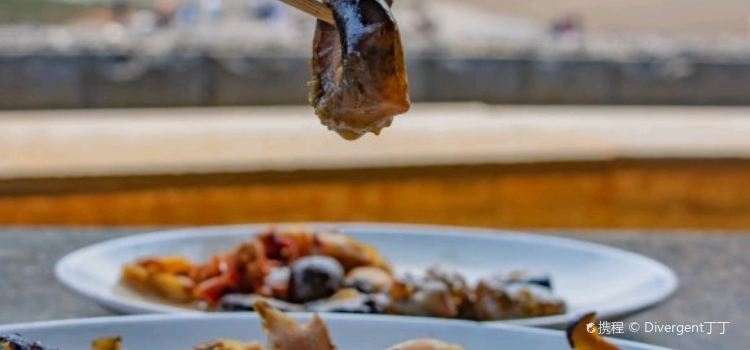해녀의집
4.9/551 Reviews
CAD42

Currently closed|Open at 08:30 today
064-783-1135
What travelers say:

Haenyeo can be said to be the treasure of Jeju Island. With the development of modern society, there are few people who work as Haenyeo in Jeju Island. It is said that Haenyeo can earn more than 30,000 US dollars a year, and it is much more than that if they open a restaurant, so they have a relatively high status in the family.
More
Reviews of 해녀의집
Some reviews may have been translated by Google Translate
4.9/5Outstanding
All (51)
Latest
Photo reviews (25)
Positive reviews (24)
Haenyeo can be said to be the treasure of Jeju Island. With the development of modern society, there are few people who work as Haenyeo in Jeju Island. It is said that Haenyeo can earn more than 30,000 US dollars a year, and it is much more than that if they open a restaurant, so they have a relatively high status in the family.
The little red house is the Ama House, where they sell fresh live seafood. There is a black sand beach next to the Ama House, but I couldn't capture the feeling with my phone. I was not in the mood to take photos because it was too sunny. The seafood is very fresh.
The occupation of female divers has been protected by the Korean government. The government cannot let this occupation disappear, so the social status of female divers has risen. Once the state subsidies are in place, this has become a stable job. His seafood is extremely fresh.
The Haenyeo House is actually located in the scenic area of Seongsan Sunrise Peak. Haenyeo fish in the sea and sell them to tourists immediately, so they are very fresh. There are many ways to cook them, but most customers choose to cut them and eat them raw with mustard. Abalone, sea cucumber, conch, and octopus can all be eaten raw. Haenyeo sell them in plates, without weighing them. Each plate costs 30,000 won. There are two abalones, two conchs, and one sea cucumber in one plate. The price is not cheap. But because it is in the scenic area, the business is quite good.
In Jeju Island, South Korea, you can often see them at the beach: dark skin, long hair tied up on top of their heads, wearing tight black diving suits, carrying colorful backpacks, and diving into the sea. They are haenyeo. Here you can eat the live seafood they catch on the spot. Many people try to eat small octopuses raw~ You can also watch the process of haenyeo catching seafood in the water. However, the haenyeo in Jeju Island are quite old, and it feels that it is not easy for them.
The red roof at the bay is the Haenyeo House. The Haenyeo House is located next to the Sunrise Peak of Seongsan Mountain. It is a restaurant and hotel jointly operated by 91 Haenyeo. There are Haenyeo performances every day. The oldest Haenyeo is over 60 years old and sings folk songs before going into the sea. The biggest feature of the seafood here is that it is fresh and cooked as soon as it is caught.
If you want to eat seafood, I recommend going to the Ama House. All the seafood are freshly caught by the Ama. They are very fresh and can be eaten raw or cooked by the restaurant. When I went there, I ate them raw. I bought a live octopus and two oysters. The Ama handled them very cleanly. I ate them with soy sauce and mustard. It tasted very good. I could also feel the octopus's suction cup sucking on my lips and tongue, which was quite unique.
After coming down from Sunrise Peak, I saw a small house in the bay below. It was the Haenyeo House. It is a restaurant run by 90 Haenyeo. The oldest of them is 103 years old and the youngest is 60. The taste is just one word - fresh. All abalone and octopus are freshly caught. The octopus is still alive when it is in your mouth.